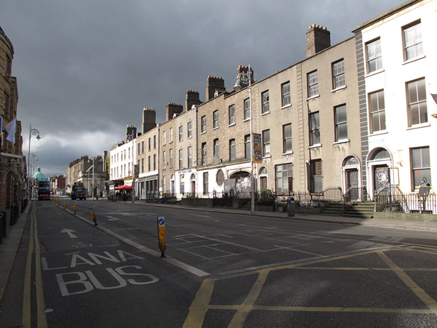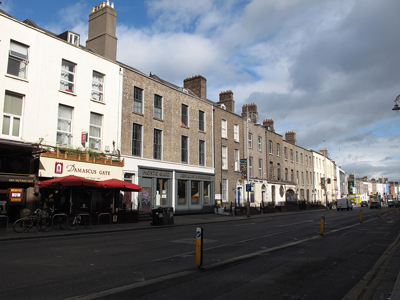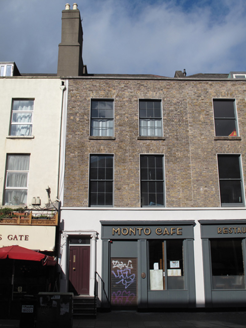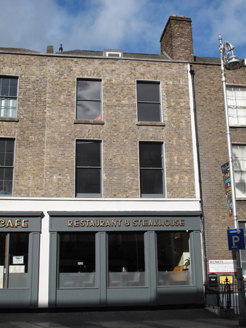Survey Data
Reg No
50110409
Rating
Regional
Categories of Special Interest
Architectural, Artistic
Original Use
House
In Use As
Restaurant
Date
1810 - 1820
Coordinates
315620, 232792
Date Recorded
01/05/2017
Date Updated
--/--/--
Description
Attached former pair of two-bay three-storey houses over concealed basement and with attic accommodation, built c. 1815, having recent shopfront to ground floor. Now in use as café to ground floor, with four-bay house to upper floors. M-profile hipped roof, partly concealed behind parapet having masonry coping. Lined-and-ruled rendered chimneystacks with clay pots. Brown brick, laid in Flemish bond, to wall to front (east) elevation. Rendered wall to ground floor, stringcourse forming continuous sill course to first floor window openings. Square-headed window openings having raised render reveals, masonry sills and six-over-six and one-over-one pane timber sliding sash windows. Some timber panelled shutters visible to interior. Square-headed door opening with Composite columns supporting fluted frieze and cornice. Timber panelled door and plain overlight. Nosed granite steps flanked by replacement railings.
Appraisal
Despite later alterations, this former pair of houses, now in use commercial use to ground floor and in single residential use to the upper floors, retains much of its salient fabric. The former pair maintains the parapet height and fenestration arrangement of the neighbouring buildings, lending a pleasing sense of continuity to the streetscape. An elegant Ionic doorcase enlivens the façade of No. 9 and forms a fitting entrance to the residential upper floors. Casey (2005) refers to Nos. 1-12 Camden Street Upper as 'the most complete and satisfying terrace on the street'. She notes their 'tall piano nobile windows, Adamesque doorcases, granite area parapets and old-fashioned railings with urn newels'. St. Kevin’s Port was renamed Camden Street, after the 1st Earl Camden, in 1776. Much of the early housing stock was rebuilt in the nineteenth and twentieth centuries.







